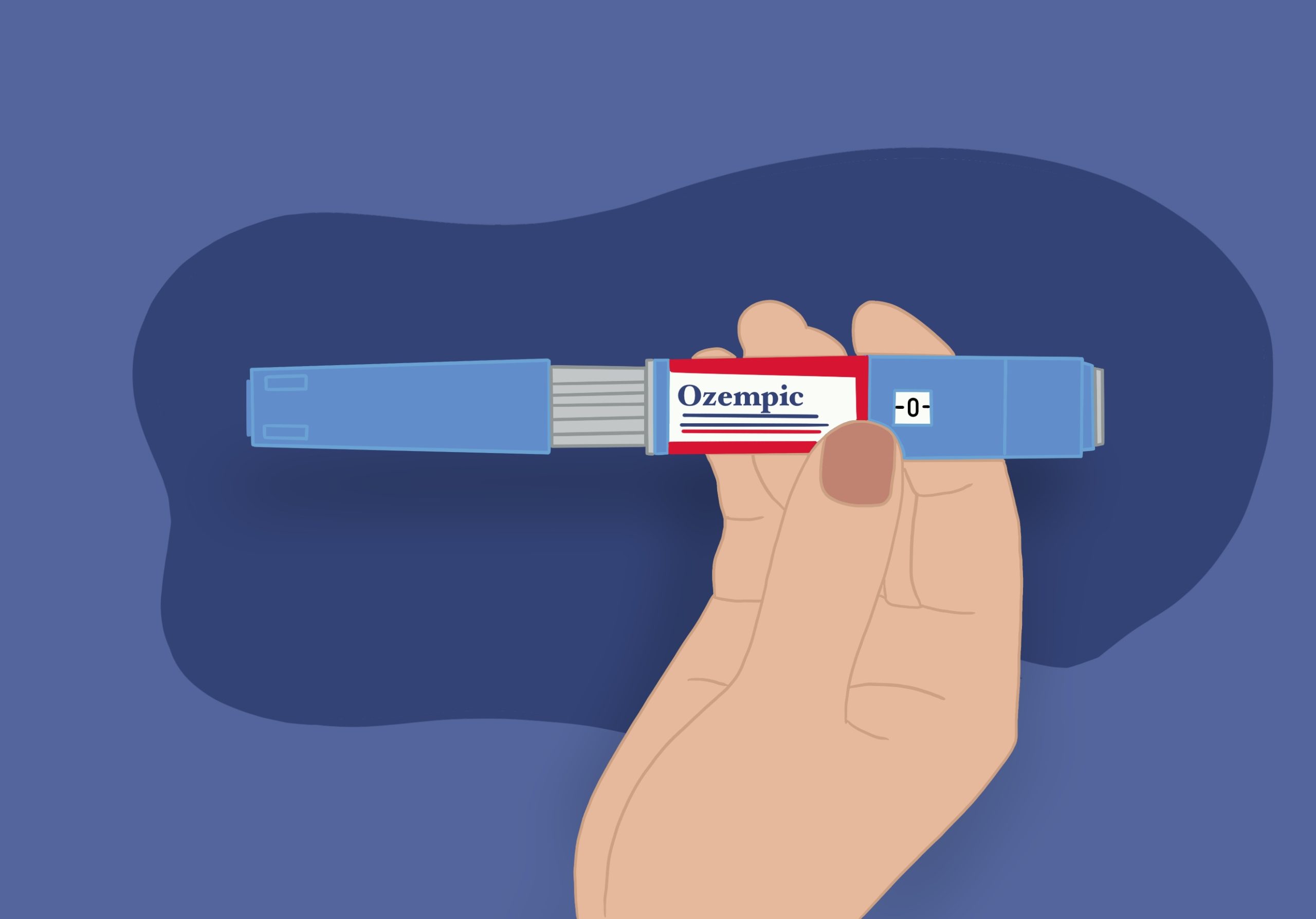KINDRA PETERSON: Hello everyone, and welcome to In The Know – the podcast covering the latest events and news at the University of Minnesota. I’m your host, Kindra Peterson, and I’m your newest podcast reporter here at the MN Daily.
For this episode, we turn to the recent one year anniversary of the Dobbs v. Jackson Supreme Court decision, which occurred on June 24, 2023. The Dobbs decision reversed the landmark Supreme Court decisions known as Roe v. Wade and Planned Parenthood v. Casey, and in the year that has followed, has continued to make waves in our Minnesota community. Joining me today is Political Science Professor Tim Johnson, to explain the Dobbs decision and the impacts it has created in the past year.
TIM JOHNSON: So Roe versus Wade in 1973 set out the federal right for women to choose abortion on demand, but it was with certain limitations. The court used the trimester scheme and that was in the first trimester. The court said that it was a private decision literally between the pregnant female and her doctor and that there would be no government involvement in that decision at all. In the second trimester, the government had a heightened level of involvement if it wanted to. And so the decision in the second trimester wouldn’t just be between the female and the doctor, the government would have some say if they thought that a fetus needed protecting. And then the government actually in the third trimester had absolute authority to ban abortion on demand completely in the third trimester.
PETERSON: In 1992, Planned Parenthood v. Casey brought about significant changes to Roe v. Wade. This pivotal case replaced the trimester framework with the “undue burden” standard. Under this new standard, the government is permitted to impose regulations on a woman’s right to choose abortion, as long as those restrictions do not excessively burden her.
JOHNSON: So, essentially, Dobbs is easy. Dobbs overturns Roe. Dobbs overturns Casey and it says there’s no longer a federal right to abortion on demand even though the Mississippi law in question in Dobbs was asking only for a ban on abortion after 15 weeks. The court simply went beyond that and said a federal ban on abortion altogether.
PETERSON: In addition to a federal ban on abortion, thus pushing the issue to be decided by each individual state, Justice Samuel Alito’s majority opinion created a drastic change for the operation of the court.
JOHNSON: I think the big surprise, if that’s the language we want to use with it, is that Justice Alito in his majority opinion essentially said we no longer have to follow precedent and remember Roe was almost 50 years old because Roe was decided in January of 1973 and it was overturned in June of 2022.
And this notion that the court no longer needs to adhere itself to precedent, but only to what history says was legal at the founding and abortion was, of course, not legal at the founding in the late 1700s. That standard that would not now only be used for abortion cases, but for almost any other case that could come before the court was a pretty wide sweeping change the court was making because one of the foundational principles of an appellate court is that precedent or past cases really are controlling for future cases.
PETERSON: In other words, the Supreme Court will now be referring back to what was legal when the Constitution was written, rather than to past precedent when making legal decisions. This detail in the opinion was unexpected, and another piece of the Dobbs case that was unexpected was the “leak” of the decision, which was released by Politico on May 2, more than a month before the official release of the decision. Professor Johnson’s extensive research on oral arguments allowed him to provide an inside look at the court and the purpose of the leak.
JOHNSON:So what we know about the court is that initial votes are always preliminary and they are never set in stone until the opinion is announced in open court. The leak, I think, was meant internally to hold Kavanaugh and Coney Barrett’s feet to the fire so that they would not leave the majority coalition to overturn Roe and to take some sort of moderate stance on it. Now, publicly, I think that the leak was also meant to try to quell what the public reaction would be at the end of the term, especially given that Americans have very short memories.
If a decision is handed down in July, and there is an election in November, as there was in 2022, the memories might not be very short. But if it’s leaked a month and a half or two months early in early May, then maybe Americans have not so long of a memory. Now, that didn’t turn out to be the case because Democrats came out in droves and there really was a blue wave. But I think internally and externally, I think there was a strategy that the leak was done strategically, if you will.
PETERSON: Regardless of the reasoning behind the leak, there continues to be demonstrations of the impact the leak is having on the Court as an institution and its reputation one year later.
JOHNSON: But I think in the end, the biggest impact that the leak had was harming the court’s reputation and therefore the legitimacy of the court because it’s not supposed to act as a political institution, it’s supposed to act as a legal institution.
PETERSON: Research aside, Professor Johnson conducts two Supreme Court related Political Science courses each semester. This provides him a unique perspective on the student experience and reaction following landmark decisions, such as Dobbs. This is his recounting of the initial reaction surrounding the Dobbs decision in Minnesota.
JOHNSON: You know, I would think given that it’s such a progressive state, there was a pretty, devastated reaction among the public, among legal scholars, among reproductive rights advocates and that was that, you know, even beyond the notion that there was no longer a federal protection for seeking abortion on demand that this was a broader sweeping understanding of how the court was going to deal with precedent going forward. And so it was a pretty dark day, I think, for people who were thinking that the court was meant to protect the rights of individuals because it was very clear from that decision that it probably was no longer thinking or that the justices and the majority were no longer thinking that that was the duty of the Supreme Court.
When it comes down to abortion specifically, the pro life movement that really wanted Roe overturned was overjoyed, both in Minnesota and beyond. And the pro choice movement in Minnesota and beyond were devastated, right? So there were these equally visceral reactions on the abortion issue, but then you add on top of that on the pro choice side, the pro Roe versus Wade side on this notion that the court has fundamentally changed how it’s going to deal with cases going forward. I think that added just additional salt to the wound.
PETERSON: So the question is, after a year of great political action on all sides, has that salt continued to smart?
JOHNSON: People feel like Dobbs is older than it is, that it’s older than 12 months. I think that on the side, the pro life side, I think people are continuing to be pretty happy that Dobbs has stayed intact throughout the nation mostly and I think that the pro choice side is going to continue to be politically activated.
I mean, we saw them activated in the 2022 midterms and the argument. I just saw this outside of Minnesota, but Governor Gretchen Whitmer from Michigan has said we want to continue to talk about abortion as Democrats because that is an issue that we will win on in the 2024 election. So I think the sides are still staunchly in their corners and they will continue to fight this out even though it might be a little muted today compared to what it was 12 months ago.
PETERSON: The classroom reaction has changed slightly in the past year, but Professor June Carbone of the University of Minnesota Law School and author of Red Families versus Blue Families has noted a larger shift in Minneapolis and Minnesota as a whole. Her research focuses on family law and assisted reproduction law, and how these issues manifest themselves in our political landscape through voting.
JUNE CARBONE: And when you look at Minnesota’s role and Minnesota in comparison with Wisconsin and Michigan, Minnesota has remade itself as a draw for the entire upper Midwest. What you see is high tech presence, immigration of college graduates, outmigration in rural areas. And so a shift in the demographics of the state where Minneapolis is an incredible draw for well educated people from the entire upper Midwest. So the state as a whole has been more dominated by the Twin Cities and it’s tilting blue not because the people who live in Minnesota have shifted, but because what you have is an immigration of what Richard Florida and the Atlantic called the creative classes: well-educated people who are open to new experiences, who are relatively tolerant, who are not dogmatic ideologically.
PETERSON: With the population of the Twin Cities itself changing, we are left wondering how our laws and regulations have changed in the past year.
CARBONE: What took place is a District Court opinion saying on the basis of the Minnesota State Constitution that the restrictions that had been enacted previously by various Republican administrations were unconstitutional. So you had a 24 hour waiting period, you had a variety of restrictions on, you know, how abortion could be performed, etcetera, and the District Court ruled these actions unconstitutional under the state constitution. And Keith Ellison, as the attorney General said, OK, we’re done. The District Court has ruled. We’re not going to appeal this case. So it is final. And not only that, we’re going to enforce the rights the District Court has recognized so, and we’re going to refuse to comply with, say, if other states start asking for things like who’s coming to Minnesota to get an abortion. We’re not going to provide that information.
PETERSON: The basis for this District Court decision is the Minnesota Supreme Court case of Doe v. Gomez from 1995, which ruled that “the right of privacy under the Minnesota Constitution encompasses a woman’s right to decide to terminate her pregnancy” (Article 3, Section II). So while Gomez held that abortion is legal under the Minnesotan Constitution, the new District Court decision from earlier this year reinforces that restrictions on abortion remain unconstitutional in the state. The Minnesota legislature also took steps to codify these policies in the legislative session that took place earlier this year.
Specifically, the PRO act, which is featured in a recent documentary from the State Innovation Exchange entitled Fractured, has altered the legal landscape in Minnesota. Not only does this new law protect the “autonomous decisions about the individual’s own reproductive health,” but it recognizes the “principles of individual liberty, personal privacy, and equality.” However, it poses the issue of whether a legal question can be raised in Minnesota that places these reproductive rights in jeopardy once more.
JOHNSON: So look, there are two checks in place. The right to obtain abortion on demand in Minnesota is not going away anytime soon. There’s a majority of justices on our state Supreme Court, who are still moderate to right leaning. They have not overturned that decision. And I’m certain they, I’m not certain, but in any time in the near future, they will not do so.
And we are very fond of divided government in Minnesota, even though the Democrats control the entire legislature and the governor’s mansion. Now that’s unusual and so even if the Republicans take over one or two of those parts of our elected governmental structure, they’re not going to be overturned. Of course, people could always try to raise lawsuits. They won’t go anywhere.
PETERSON: Earlier this year, Governor Walz reaffirmed this perspective, stating that “no matter who sits on the Minnesota Supreme Court, this legislation will ensure Minnesotans have access to reproductive health care for generations to come.” Unfortunately for those who enjoy predictability, only time will tell if Governor Walz’s statement will ring true. In the meantime, those of us here at the MN Daily will continue to do our best to keep you ‘in the know’ on the most important issues facing our University of Minnesota campus community, including updates covering Dobbs, the PRO act, and reproductive rights in MN.
This episode was written by Kindra Peterson and produced by Kaylie Sirovy. As always, we appreciate you listening in and feel free to email us at [email protected] with comments or questions. I’m Kindra, and this is In The Know.









